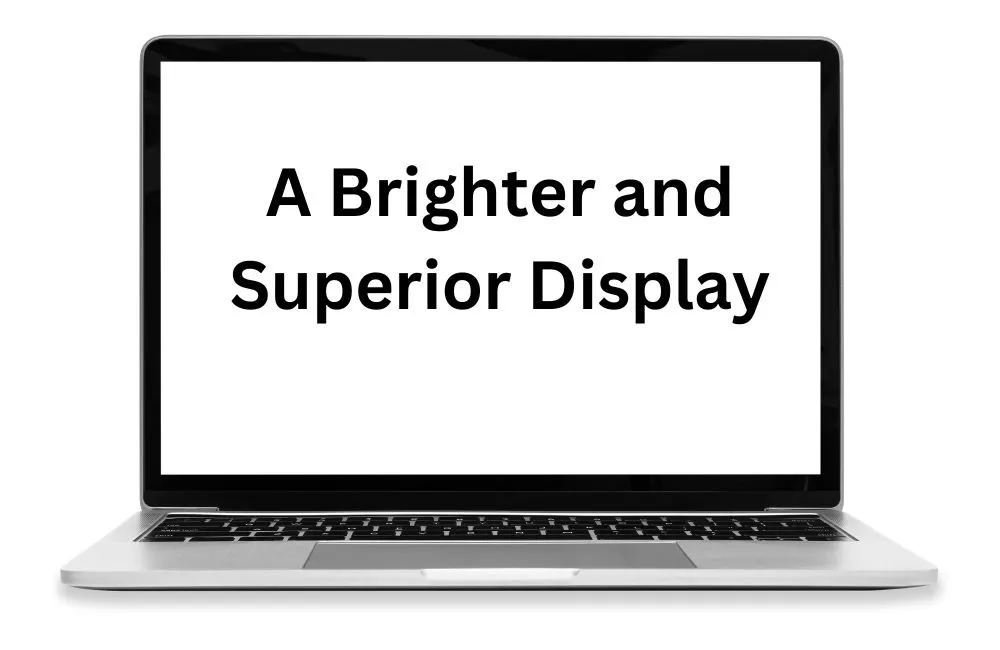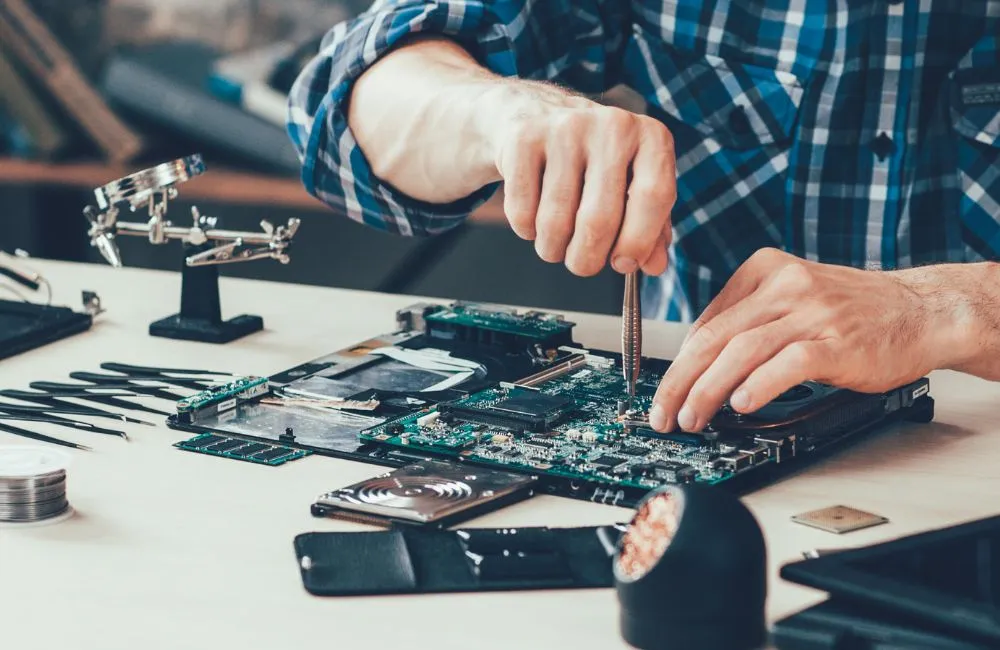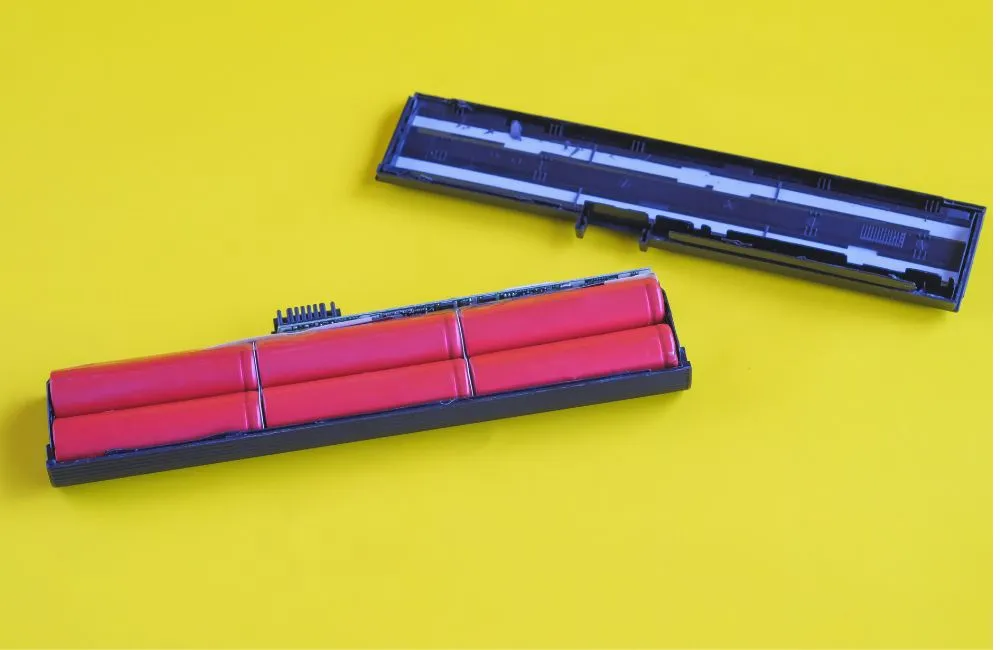Is Macbook Pro Good For Music Production: The 14-inch MacBook Pro remains our top recommendation for the best laptop for music production. Equipped with either an M1 Pro or M1 Max processor, this flexible laptop is very potent and can tackle even the most difficult tasks with ease.
The MacBook Pro is suitable for music production because it has a more stable operating system, an intuitive user interface tailored to music production, and is crash-resistant.
Mac includes popular music software such as Logic Pro. The Core Audio drivers present on MacBooks improve audio quality overall.
Mac is a formidable competitor, primarily due to its powerful operating system and sleek, minimalist design, despite being less popular than the PC. Is the MacBook Pro, despite its undeniable performance in terms of security, stability, and usability, suitable for music production?
MacBook Pro Features: Is Macbook Pro Good For Music Production?
Below, we will briefly describe the Macbook Pro’s most essential features for music production.
A Brighter and Superior Display

The 16.2-inch Liquid Retina XDR display on the new Macbook Pro is the best display available on a laptop computer. It has a dynamic refresh rate of 120Hz and is supported by Apple’s ProMotion.
The previous version of the Macbook Pro had a resolution of 2500 x 1600, whereas the Macbook Pro 2021 has a resolution of 3456 x 2234 in a 16-inch version and 3024 x 1964.
A larger screen is preferred when dealing with complex mixing or audio-to-video because viewing the mixer, editing window, and plugins will increase your efficiency.
If you need help understanding the fundamental difference between laptop screen resolutions, please read the article at the link.
The former models featured Retina Display, while the latter had a Liquid Retina XDR display with Apple ProMotion, designed to reduce eye strain.
The refresh rate is significantly lower than other high-end laptops, such as the Dell XPS OLED. The XPS OLED has a 60Hz refresh rate, whereas the Pro 2021 has an adaptive 120Hz refresh rate.
While refresh rates are more important for videos, who wouldn’t want a screen that plays music without skipping a beat.
Read More: 12-Best Gaming Monitors Under 250
Simple Hardware Administration

Connecting to audio hardware will likely be required at some point during music production. And because drivers are crucial to the connection between hardware and software, a music-producing device must include functional drivers.
Mac utilises CoreAudio drivers, a set of centralised drivers that keep everything localised for easy configuration and inter-device switching.
Unluckily, when using a PC, it’s likely that you’ll need to install drivers for every new piece of hardware you attempt to pair with the system.
Especially if you have clients waiting, this can consume a considerable amount of your time. Mac users rarely worry about installing drivers and syncing new devices to digital workstations because the Mac OS takes care of such tasks.
The Core Audio interface is an integral component of MacBooks that improves sound management. As a result, Core Audio enables Mac users to incorporate sounds and recordings from external devices without degrading the overall audio quality.
This feature gives the Mac a significant advantage over the PC when it comes to professional recording.
Long-Lasting Power Provided By A 100KWh Battery

A further advantage of the Macbook Pro 2021 is its 100KW battery, which provides over 14 hours of continuous power.
The battery supports MagSafe 3 for rapid charging and can be charged to 50 percent capacity in 30 minutes. Additionally, you can use Thunderbolt 4 ports for fast charging.
The 2020 model features a 58.2W battery, which represents a significant upgrade. The 2020 Mac will be able to run intensive music production software such as Apple Logic Pro, Garageband, FL Studio, and Audacity for more extended periods than its predecessor.
As these DAWs are performance-intensive, the Pro’s battery will last between 6 and 10 hours, which is surprisingly good.
Read More: Can a10,000mAh power bank charge a laptop
Read More: Why Is My Laptop Battery Draining So Fast
Read More: How To Increase Battery Life of Laptop
Build Quality
MacBooks are renowned for their sleek, minimalist design that facilitates usability, especially for mobile professionals such as creatives.
\Apple improves its Mac OS each year and provides free upgrades to Mac users, which is a significant advantage of using a MacBook. This indicates that producers can capitalise on system reliability and memory management advancements.
Apple has a reputation for using high-quality components in the construction of its devices, which helps to justify the high prices of advanced MacBooks.
As a result of the use of high-quality hardware and software, your MacBook is likely to last for a long time despite its constant use for intensive music production tasks.
Moreover, most MacBooks’ minimalist and compact designs make them ideal for musicians, producers, and DJs.
Due to the reduced likelihood of crashing due to a superior operating system, you can comfortably rely on your MacBook for intensive recording and editing if it has an excellent processor and sufficient memory.
The Availability of Diverse Software

Windows has hundreds, if not thousands, of apps that music producers can use, unlike Mac OS’s limited audio production software and applications.
The availability of various software and applications enables aspiring producers to hone their respective skills before advancing to premium software. Most Mac applications are not free, so you must be prepared to spend money on Mac OS applications.
Affordability
If you wish to purchase a MacBook with music production capabilities, you will need to invest considerable money. This is because production is a memory-intensive process that requires devices with superior processors and significant memories.
And to acquire a MacBook with a superior processor and memory, you will almost certainly have to spend a great deal of money. PCs are more cost-effective than Macs and serve as excellent alternatives for businesses on a budget.
Wrapping Up
If you want to work on professional music projects, a MacBook is an excellent device for music production. MacBooks, renowned for their elegant, minimalist design, feature a stable operating system that breezes music production.
The Mac OS is generally suited for supporting the work of creatives without the hassle of learning how the operating system works.
With a MacBook, you will only require a little experience to perform music production duties. Mac is a formidable force for music production due to its access to world-class software such as Logic Pro.
Highly Portable
Pro 2021 has slightly different dimensions than Pro 2020, as it is slightly larger.
It is also slightly heavier, weighing 2.1 kilogrammes compared to the former’s 1.4 kilograms. The screen size of 16.2 inches, as opposed to 13 inches, contributes to the device’s slight bulk.
The difference in weight is negligible, but the larger display will be a treat for you. The portability of the 2021 Pro will unquestionably allow you to produce music on the go.
FAQs: Is MacBook Pro Good for Music Production?
Which of the MacBook Air or MacBook Pro is superior for music production?
The MacBook Pro is superior to the MacBook Air for music production due to its greater processing power. The only advantage the MacBook Air has over the Pro in terms of music production is that it is completely silent and more portable due to its lack of fans.
Is the MacBook Air 2022 suitable for music production?
MusicRadar Verdict. The M2 MacBook Air is the most beautiful, powerful, and quiet laptop for music production. After more than two decades of producing music on laptops, we can confidently say that the Air M2 is the laptop we’ve been waiting for.
Is an M1 Mac with 8GB of memory adequate for music production?
With 8GB of RAM, music production is possible. In the ancient past, we used to run Emagic Logic on 2001 systems with less than 1GB of memory.
How much RAM do I need to produce music professionally?
For the majority of music production processing, 8 GB is sufficient. 16 or 32 GB can be helpful if you intend to work with the large sample libraries required to realistically emulate acoustic instruments. However, think twice before paying exorbitant fees to maximise your computer’s RAM.
What is the best processor for music production?
A processor with four cores is ideal for music production. The second metric is clock speed, which typically ranges between 2.4 and 4.2 GHz.
Do I need additional RAM or a more powerful processor for music production?
Which is more important for music production: RAM or CPU? CPU is far more important than RAM in music production. Only some individuals are aware that RAM can be upgraded in the future. However, you cannot upgrade or add a new processor in the future for the CPU.
Read More: How To Install Windows 10 On Mac Without Bootcamp or USB
Read More: Can A Laptop Be Tracked After Factory Reset
Read More: How Long Do MSI Laptops Last
Read More: How To Charge a Laptop With HDMI





